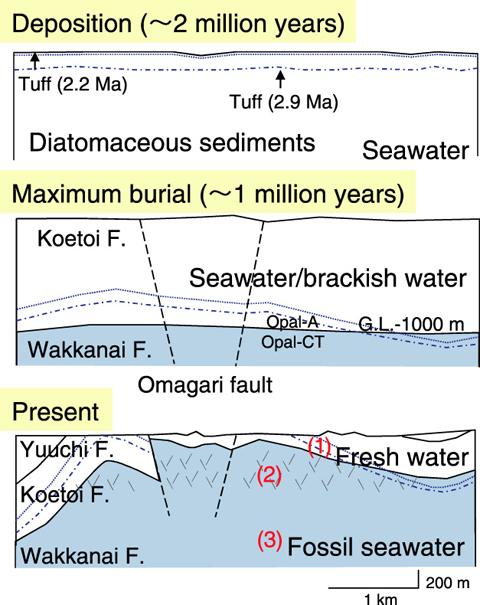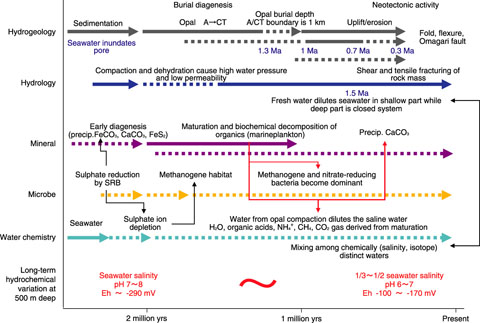
Fig.2-20 Long-term hydrogeological evolution

Fig.2-21 Interrelationships among geological features, events, and processes
A methodology to estimate long-term hydrochemical evolution deep underground is indispensable for the safe geological isolation of high-level radioactive waste (HLW). This study demonstrates a methodology for this by illustrating scenarios of past geological events and processes, and their interrelationships with present-day hydrochemical conditions. In addition, this study makes inferences regarding long-term variations in groundwater chemistry in Horonobe, Hokkaido, Japan.
The study area is underlain mainly by Neogene to Quaternary marine sedimentary rock, (the Wakkanai Formation and the overlying Koetoi Formation: siliceous and diatomaceous mudstones). During various events in the geological past, such as deposition, compaction, uplift, and denudation, and the more recent Neotectonic activities in this area, highly permeable hydrogeological structures formed at depths not more than 400 m below ground level in the Wakkanai Formation. The hydrogeological system can be subdivided into three hydrogeological sub-systems: (1) the overlying, relatively low permeability Koetoi Formation, (2) the highly permeable, upper Wakkanai Formation at depths less than 400 m, and (3) the relatively low permeability Wakkanai Formation, at depths greater than 400 m (Fig.2-20). The present-day hydrochemical conditions in each sub-system have been influenced by hydrogeological properties and hydraulic conditions over a long period. In subsystems (1) and (2), recharging with meteoric water flushed connate seawater during uplifting and denudation during the last million years. In contrast, fossil seawater with one-third to one-half the salinity of present-day seawater has been preserved in subsystem (3).
The relatively low permeability sequence in sub-system (3) was formed by the compaction of diatomaceous mudstone during subsidence prior to one million years ago. After that, changes in climatic conditions and geographical features would not have influenced groundwater flow. The groundwater chemistry evolved from seawater during long-term geochemical diagenesis in a relatively closed system (Fig.2-21). The long-term variations in salinity probably range from that of seawater to that of present-day groundwater. The occurrence of secondary minerals shows that the buffer reactions of carbonate and sulphide minerals have preserved a near neutral pH and reducing condition since initial diagenesis immediately after deposition of the rock formation. Furthermore those processes seem to have continued for several hundred thousand years. It is possible to extrapolate the hydrochemical processes and conditions into the future based on the interrelationships among geological features, events, and processes.
<Previous: 2-9 | Next: 3 Nuclear Fusion Research and Development >